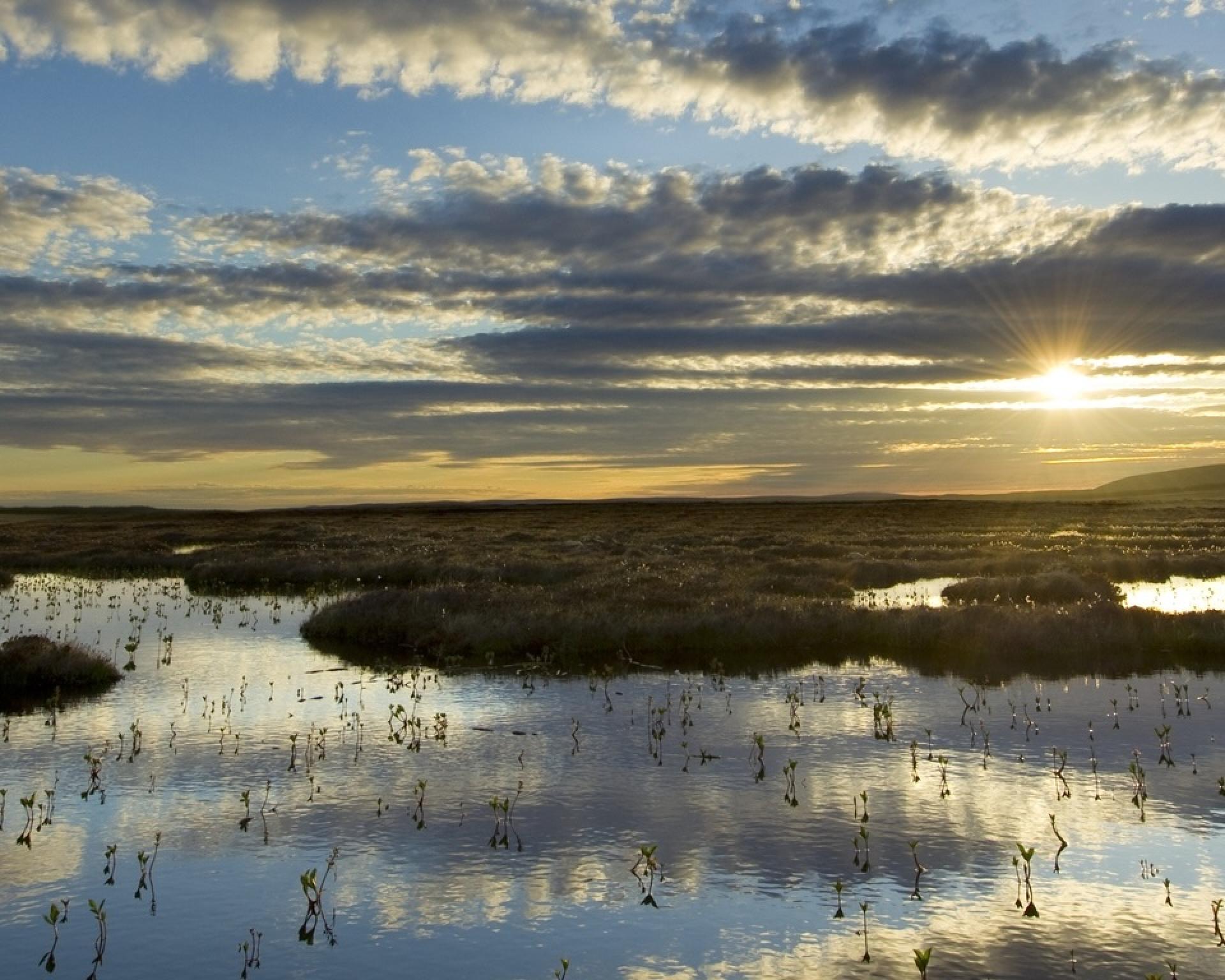You are here
Be A Better Gardener: For Peat's Sake
Be A Better Gardener: For Peat's Sake
by Thomas Christopher
It must be twenty years since I first encountered arguments against the use of peat by gardeners. Their point was that peat harvesting destroyed its remarkable bog habitat and that despite the claims of the peat extraction industry, this was not a sustainable practice. True, the Canadian producers who supply most of America’s “peat moss” claim that with 294 million acres of peat bogs in the northern part of their nation, their current exploitation of 43,500 acres (with an additional 34,000 acres already strip-mined) is acceptable. Besides, they add, the peat bogs will revive themselves, a claim undercut by the fact that on average a healthy bog adds only 1/25th of an inch or less of new peat annually. Figures from Canadian peat producers reveal that typically three inches of peat are removed from a bog for a period of 20 to 40 years, creating a barren pit that will never heal on a human time scale.
A new urgency has come to this issue as the impact of global warming worsens. Because this is driven by the release of greenhouse gases, principally carbon dioxide, into the Earth’s atmosphere, authorities are calling for “carbon sequestration,” the removal of carbon from the atmosphere and its long-term storage, to reduce carbon dioxide levels. That, of course, is precisely what the bogs are doing. The sphagnum moss and other plants that grow in the bog absorb carbon dioxide as they grow and when they die, they turn into peat that sequesters the carbon indefinitely. Extracting that peat for use by gardeners sets in motion its decay and the re-release of its carbon into the atmosphere.
The role of peatlands worldwide in carbon sequestration is massive. Many activists have promoted tree planting as a way to absorb and sequester carbon from the atmosphere. Yet peatlands currently sequester twice as much carbon as all the world's forests. The damage we are doing by draining peat bogs, either for mining the peat or converting the land to other uses, releases huge amounts of carbon into the atmosphere, equal to about five percent of human-generated carbon emissions.
Most gardeners I know, including me, long ago stopped buying bales of sphagnum peat to dig into their garden soils as a source of organic matter. That’s why I was taken aback when I learned that the consumption of peat by the American horticultural industry continues to rise at a steady two to three percent per year. Peat continues to be a foundation of the nursery industry, a staple of seed-starting and growing mixes for plants, as well as the basis of most commercially produced potting soils.
A better way forward can be found across the Atlantic. In August of 2022, the British government announced that it was moving toward a ban on all horticultural uses of peat. Originally planned as a comprehensive ban to begin in 2024, this measure was supported by the Royal Horticultural Society but opposed by industry groups. Currently, the necessary legislation is stalled and the government has announced it will delay the ban for at least some commercial growers until 2030.
Still, this is a beginning, and the fact that British gardeners have, for the most part, gotten on board is admirable. When I spoke to Alex Critchley and Sarah Johnson of the Wildlife Trust for Lancashire in northwestern England about peatland preservation, I admitted that while I have given up the use of every other peat-based gardening product, I have continued using peat-lite seed starting mixes because peat’s antiseptic properties banish “damping off,” a fungal disease that commonly attacks and kills newly emerged seedlings grown on other types of media. With kindness and patience, Alex and Sarah explained that finding substitutes for all peat products was an ongoing process, but that their countrymen were making progress and they were confident I would be able to bring my gardening into line with environmental best practices.
We then went on to discuss all the innovative programs The Wildlife Trust is sponsoring to protect and restore the region’s remaining peatlands, and the rare wildlife that is reappearing as a result. A notable success was the successful reintroduction of the Manchester Argus Butterfly, a species once emblematic of the local fauna but which was extirpated from Lancashire 150 years ago by the draining of bogs.
To learn more about the Lancashire Wildlife Trust’s programs to preserve and restore peatlands, log onto the Berkshire Botanical Garden’s “Growing Greener” podcast at www.berkshirebotanical.org.
Be-a-Better-Gardener is a community service of Berkshire Botanical Garden, located in Stockbridge, Mass. Its mission, to provide knowledge of gardening and the environment through a diverse range of classes and programs, informs and inspires thousands of students and visitors each year. Thomas Christopher is a volunteer at Berkshire Botanical Garden and is the author or co-author of more than a dozen books, including Nature into Art and The Gardens of Wave Hill (Timber Press, 2019). He is the 2021 Garden Club of America's National Medalist for Literature, a distinction reserved to recognize those who have left a profound and lasting impact on issues that are most important to the GCA. Christopher’s companion broadcast to this column, Growing Greener, streams on WESUFM.org, Pacifica Radio and NPR and is available at berkshirebotanical.org/growinggreener.
Help Our Garden Grow!
Your donation helps us to educate and inspire visitors of all ages on the art and science of gardening and the preservation of our environment.
All donations are 100 percent tax deductible.


